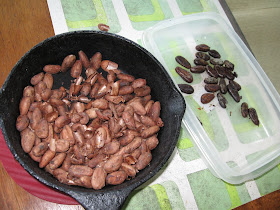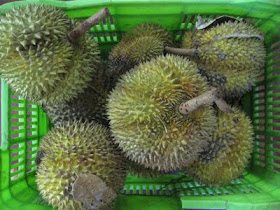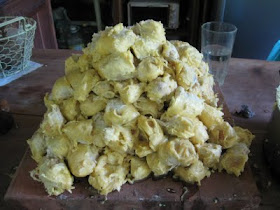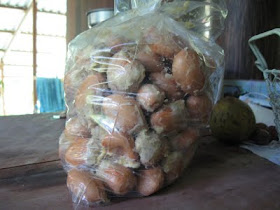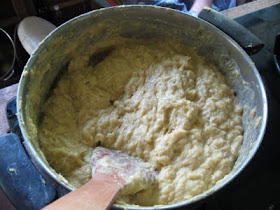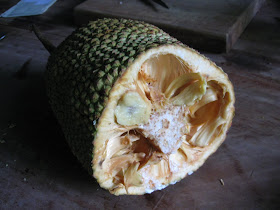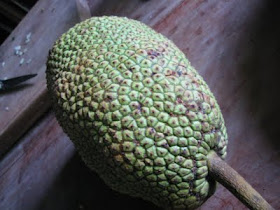
Yesterday we went out for the morning to run errands, nothing special in that but I thought it might be interesting to share a somewhat typical day on the Caribbean.
We left the house running only 20 minutes late, but 15 minutes along the road had to turn back because I forgot my passport. We needed the passport for the police checkpoint. The police stop traffic and check mostly for illegals from Columbia, but it depends . . . usually on the time of month and whether there's been any recent trouble. We sailed through the checkpoint without a policeman in sight, ah well.
Our first port of call was the wonderful
Aviarios Sloth Rescue Center. This is really a unique place, the only one in the world. They have over 130 sloths which have been rescued and are now living at the center, many because they were brought in as abandoned babies and have grown up there. It's an incredible organization run on love and respect for these amazing creatures. They have an
"Adopt a Sloth" program which I would highly recommend for birthday or Christmas gifts to all those people who already have enough. We were there because they want the farmer to work on their gardens. A long time ago, when they were just starting out, the farmer helped them with their initial gardens, now they are so much bigger. I'm excited, it means we get to see more of this:

The center is seeing more and more abandoned babies. Sloths are pregnant for 11 months and they keep their babies with them for up to a year. The babies ride on their mum's belly and then her back. If the mum doesn't think the baby will make it, she'll drop it to save herself. Sloths have a terribly slow metabolism and need to conserve as much energy as possible: a sickly baby is just too much. The fact that more babies are making it to the center could mean that the sloth population is having a harder time environmentally OR it could mean that the people are more responsive to animals in need and know that they can be saved at the rescue center. I choose to believe the second option.
We left and headed for Limon, the regional city. The road runs along the ocean for much of the way and over a few rivers where I always look for caimans, never seen one yet though. We pass houses on stilts with wooden walls in pastel shades of mostly peeling paint and rusted tin roofs. Homemade hammocks are strung between trees and the sign for 'dos-pinos', the large co-operative selling dairy and juice products, has its round green metal presence on the telephone poles. We rounded a corner to see a recently killed German Shepherd dog in the road being mauled and fought over by vultures. To come from the Sloth Center to this was very ugly, but re-enforced how close life and death are. The Caribbean is good for that - everything here is sharper, more real, life and death are bigger and bolder. We have a German Shepherd at home and I was struck by how familiar and awful the sight was.
Limon is a pirate town. Just offshore is the island where Columbus landed claiming Costa Rica - rich coast - for Spain. It's a port, with all that entails and has been the center for shipping enormous quantities of bananas and pineapples, coffee and cacao out, and who knows what in. It's far more Caribbean than Costa Rican and has an energy that's a little raw and buzzed. Most of the stores we had business in were run by descendants of the Chinese workers who built the railway, but I wouldn't say it is a very cosmopolitan place. We had good cold fresh pipa (young coconuts) as we walked through the crowded, dirty center. We walked through the Central Market between stores selling plastic pots and offal, cheap Panamanian clothes and imitation electric goods. There are herb stalls which have odd colored liquids in old soda bottles and great wads of dried grasses; vegetable stands offering piles of mango, carambola, avocados; fish shops with great heads of snapper and chunks of marlin, and everywhere the pungent aroma of trash left out. We snacked on roasted peanuts with salt and lemon. Limon is always hot and we are always in a hurry to leave. We hit the road home stopping for a pati - the local corn pastry with spicy meat filling, and frozen jobo juice. Both were delicious.
It took us an hour to get home, sailed through the checkpoint with no questions, my passport tucked safely in my bag.


